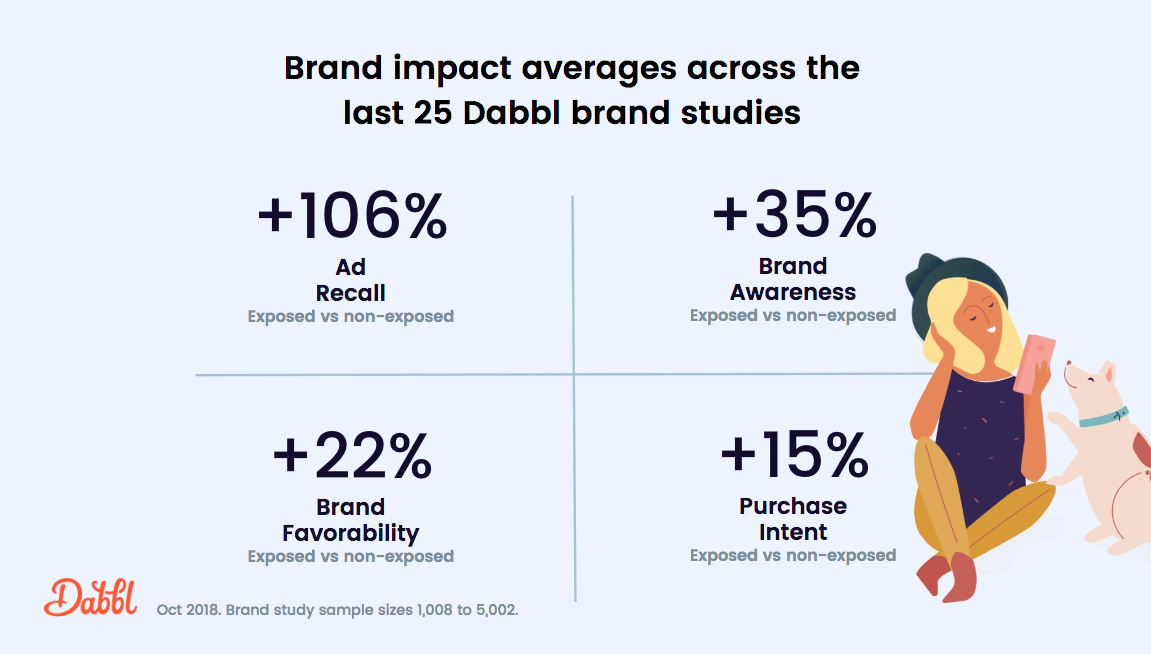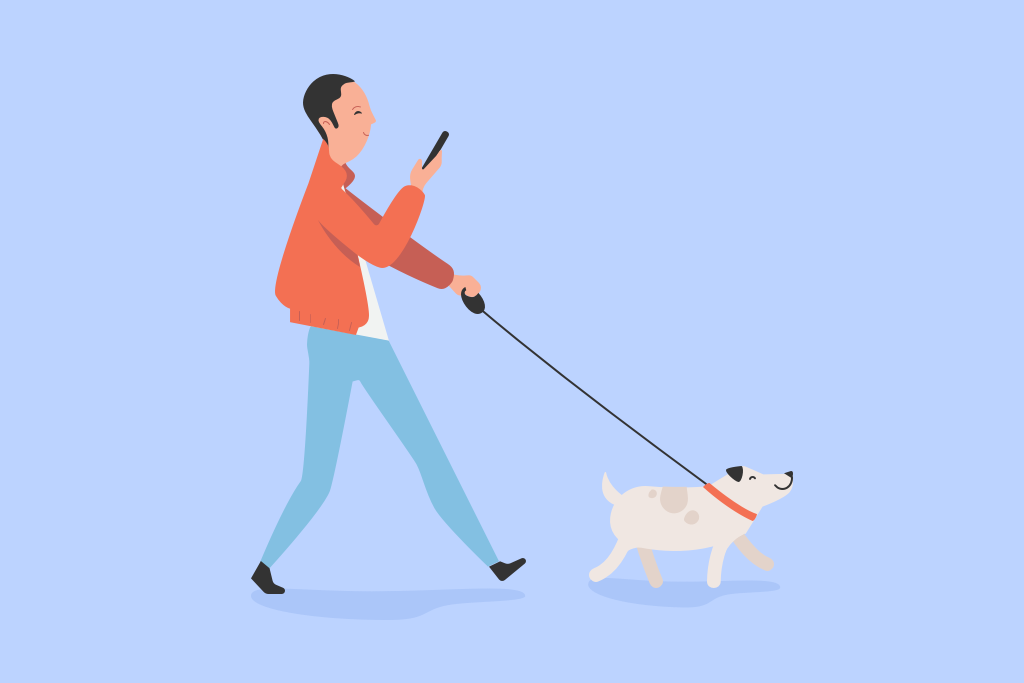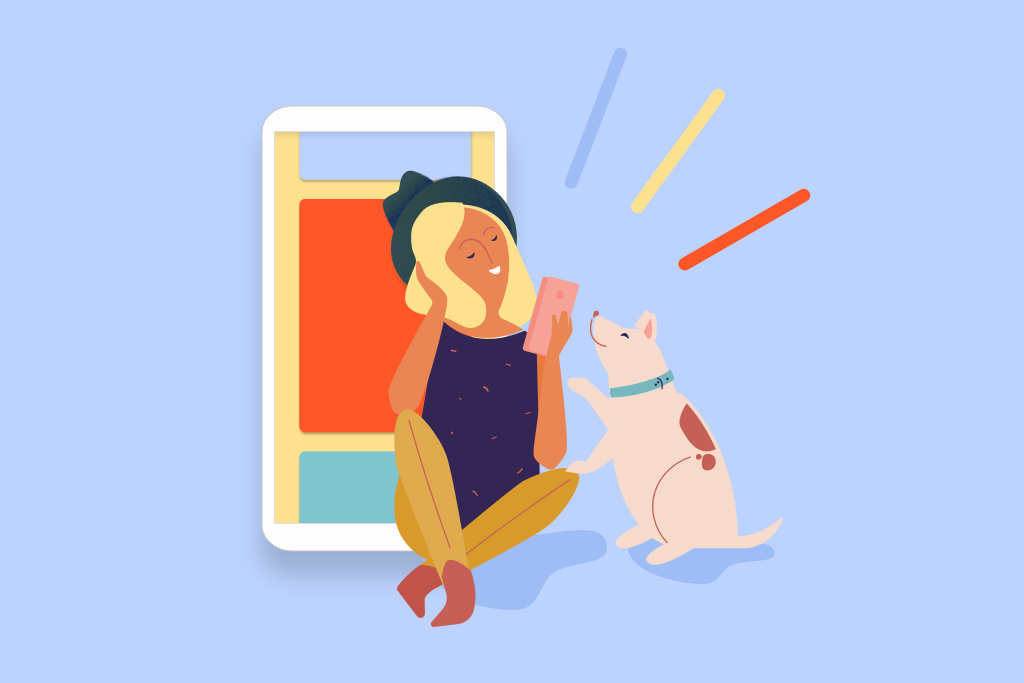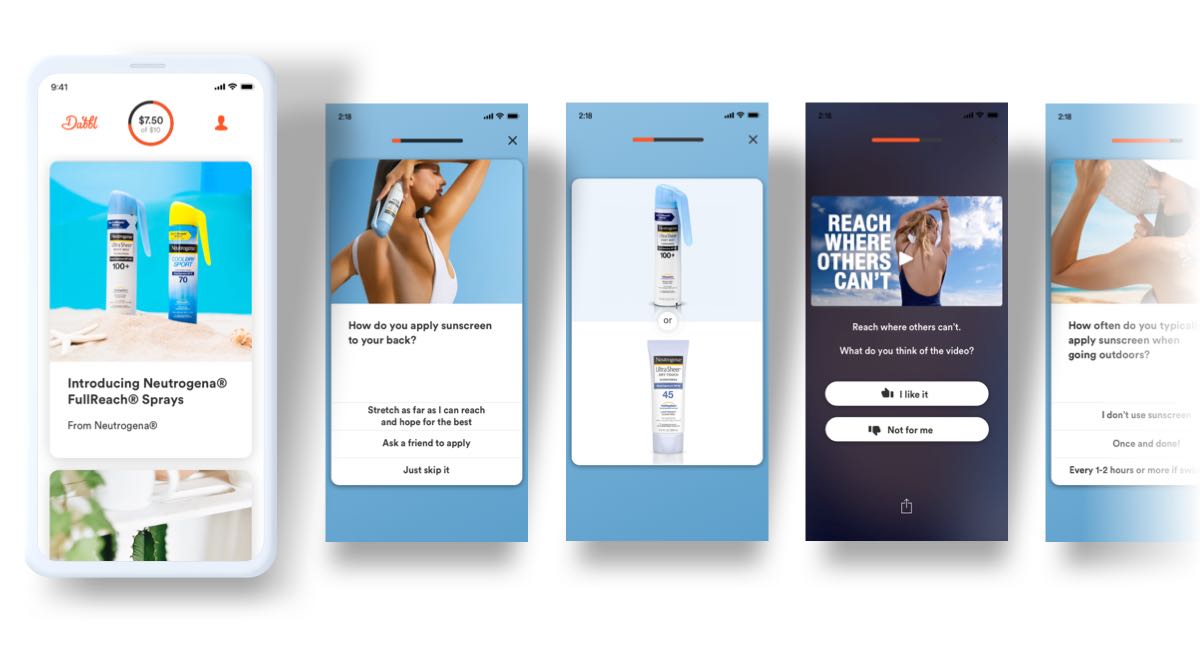We looked at 25 brand studies of advertising experiences that ran on Dabbl to see what kind of impact they had on consumers’ relationships with the brand. Here’s what we found.
Context: one camp of advertisers says that if you want your ads to have meaningful impact, the quality of the ad creative is your greatest lever. Another camp says that the more data you have, and the more you track consumers, the better the impact.
Having both great creative and accurate data is important. But a less-talked-about lever is proving to be extremely effective in advertising: simply being nicer to consumers.
What do we mean by “being nicer”? We’ll dive into that at the end of the post.
But first, let’s check out the results.
25 Brand Studies
We looked at 25 brand studies of branded experiences that ran on Dabbl to see what kind of impact they had on the consumers’ relationships with the brand.
After the Dabbl brand advertising experiences ran, we ran additional surveys on Dabbl that measured brand impact. We compared the results of those exposed to the brand experiences with those who were not exposed. Sample sizes for the studies ranged from 1,008 to 5,002.
Here’s what we’ve found across the 25 brand studies:
+106% average increase in ad recall
+35% average increase in brand awareness
+22% average increase in brand favorability
+8% average increase in likeliness to recommend
+15% average increase in purchase intent
for those exposed to Dabbl brand experiences versus those who were not exposed to the brand experiences.

These are not numbers from a single, cherry-picked outlier. These are the averages of the 25 brand experiences studied.
+106% Ad Recall
It starts here. Are the experiences the brand creates memorable enough to have an impact?
The greatest of brand experiences make us stop and consider them. But more often than not, ads are a blur we put up with to get to the media we really want.
Ad recall is one way to measure whether your brand’s ads were memorable.
Across the 25 brand studies we ran, we saw an average ad recall net difference increase of +106% for those exposed to the brand experiences versus those not exposed.
People are remembering the brand experiences.
Why such a large number? We dive into the “why”s at the end of the post, but a big part of it is that instead of people being interrupted by ads, they’re choosing when and where to view the ads.
Let’s continue with the results.
+32% Brand Awareness
OK, so more consumers are remembering the ad experiences. The next question becomes, what affect does that have on consumers’ relationships with the brands?
Let’s start with brand awareness.
How much more aware of advertisers’ brands are people who participated in Dabbl brand experiences compared to Dabblrs who did not participate?
Across the 25 brand studies we ran, we saw an average net increase of +32% among those who were exposed to the Dabbl experiences versus those who were not exposed.
Most of these 25 brand studies were for very recognizable brand names. But the parent brand was often not the subject of the study. Instead, the brand being studied was the sub-brand at the product or product line level.
This included new product brand launches and extension brands.
+22% Brand Favorability
OK, so consumers recall the ad and they’re aware of the brand. But so what? Are their attitudes toward the brands improved in any way?
First, let’s look at how we normally react to ads. Let’s assume some ads made it through your skips and other ad blockers and you notice it. How many of these are ads that make you feel something more than “Meh, yet another brand selling its stuff in an ad.”
Or worse, an ad interrupts your video or website just long enough to tip from “meh” to annoyance. 😡
On the other hand, how often is the ad creative and context just right, where the ad does what it was intended to do: you consider the brand and see it in a more favorable light?
Across the 25 brand studies we ran, we saw an average +22% increase in consumers seeing the brand more favorably for those exposed to the brand experience versus those not exposed.
More consumers are moving from “meh” to “yeah, I like this brand more.”
+8% Likeliness to Recommend
Some brands lend themselves well to sharing with others. Others take more convincing before consumers say, “Hey friends, family and colleagues, check out this brand!”
Across the 25 brand studies we ran, we saw an average +8% increase in likeliness to recommend for those exposed to Dabbl brand experiences versus those not exposed.
The brand experiences are creating more people who favor the brand and more people willing to recommend it to others.
+15% Purchase Intent
Across the 25 brand studies we ran, we saw an average +15% increase in consumers declaring they intend to purchase the advertised product, comparing those exposed to the brand experiences versus those not exposed.
While some marketers like the purchase intent measurement, we know it doesn’t get universal love in some research circles. We believe, however, that it, along with the other measures here, adds yet more evidence to the overall story of improved consumer-brand relationships that traditional advertising often struggles to provide.
And the story that it tells seems to be this: It turns out people like brands more when they’re treated well.
How Can Your Brand Have this Kind of Impact?
Why is Dabbl seeing such great numbers? And what can advertisers do to similarly encourage people to stop and devote real attention to their ads?

Treat consumers significantly better than they are being treated by typical digital advertising. Respecting consumers produces outsized results.
Here’s what’s working on Dabbl:
1. Let Consumers Choose
People are choosing when to engage with the ads. Instead of interrupting their media with your ad, let consumers choose when and where to engage with your brand in ways that are convenient for them.
2. Respect Consumers’ Data & Privacy
Instead of tracking consumers around the web via sneaky surveillance, ask them for their preferences and interests directly. Relying on potentially unethically-sourced inferred data has many limitations. When there is trust, declared data can provide richer information. Ask for it.
3. Create Fun, Engaging Experiences
Deliver brand experiences that are more fun than your average ad. Consumers can give their opinions, engage with trivia and mobile video. Higher engagement results in ads that are more memorable. Across all Dabbl brand experiences in the past month, people spent an average 38 seconds and engaged in 6.75 interactions per brand experience.
4. Remove Distractions
Let your brand be the focus. Devoting 100% of the screen real estate to the brand experience improves brand impact.
5. Be Helpful
Cut out the middlemen gatekeepers and share your ad budget directly with the people whose attention and data your brand cares most about. Brand experiences on Dabbl are not interruptions, they are the destination. Ads can help people rather than annoy. Truly and materially valuing consumers’ time and data makes this possible.
“I’ve learned that people will forget what you said, people will forget what you did, but people will never forget how you made them feel.”

